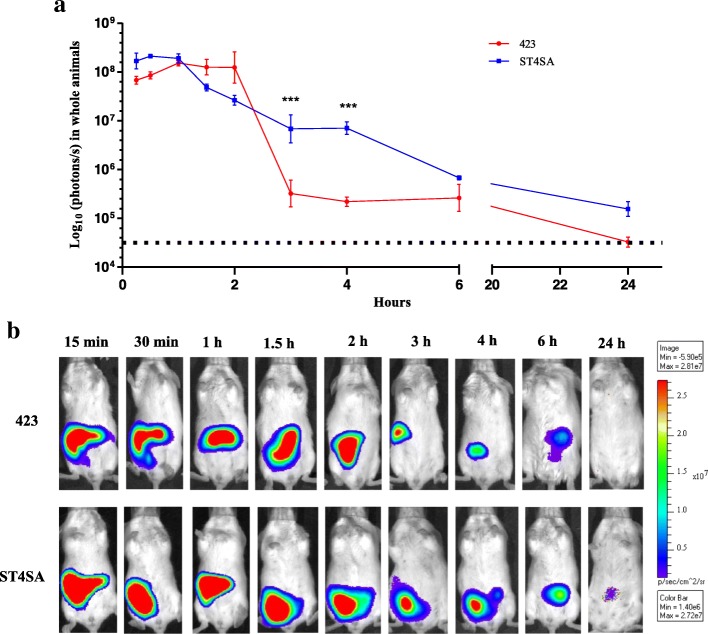Fig. 2.
Monitoring of L. plantarum 423 and E. mundtii ST4SA colonization in the digestive tract of mice by bioluminescence imaging in whole animals after one oral administration. Lactobacillus plantarum 423 Fluc and E. mundtii ST4SA Fluc were fed intragastrically (4 × 109 CFU) to two sets of three mice (n = 3, per strain). The bioluminescent signals in log10 photons/s measured from whole animals at different time-points over a 24 h period (a) are plotted, with standard deviations. Significant statistical differences between the bioluminescence signals of the two groups of mice are indicated with three asterisks (P < 0.001); Mann-Whitney nonparametric test). The background bioluminescence signal (approximately 4 × 104 p/s) emitted is represented by a dashed line. b Visual images of bioluminescence emission in whole animals by mice fed once with L. plantarum 423 Fluc or E. mundtii ST4SA Fluc. In each case, one representative image of one mouse is shown. The intensity of the photon emission is represented as a pseudo-color image. One representative scale bar is shown (p/s)

